Exact Replica Watches
Hairspring, The Internal Driving Force Of The Clock’s Progress, Fake Watch
The hairspring is the core of the operation of mechanical clocks. Before the invention of the hairspring, mechanical clocks relied on a pendulum as an oscillator to divide energy and keep time. In the 17th century, Huygens’ hairspring significantly reduced the clock’s size clock. Today, the hairspring we often refer to refers specifically to the hairspring (Balance Spring or Hair Spring) on the balance wheel, although the barrel spring (Barrel Spring) is also a type of hairspring (Spring). The emergence of hairsprings was the basis for the emergence of pocket watches and wristwatches and was also the end of the glorious era of pendulum clocks.
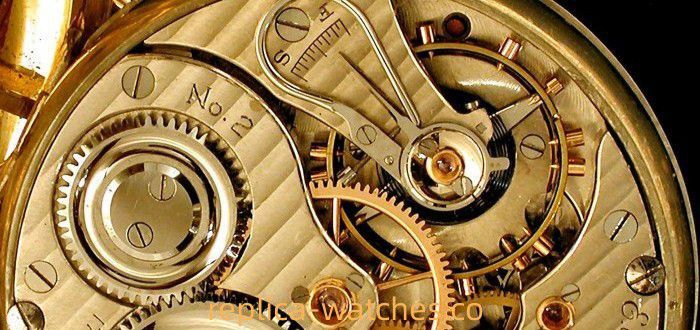
Pocket watch balance spring
The hairspring follows the physical law of the swing period. In watches and clocks, the frequency of the balance spring system is related to the moment of inertia of the balance spring. As a precision mechanical structure, the hairspring’s material, effective length, thickness, and width influence the entire system. Influence. Because of this, as mechanical watches continue to develop today, hairsprings are still the highest threshold for measuring the technological strength of various watch manufacturers. Significantly, few watch factories worldwide can independently create and produce hairsprings.
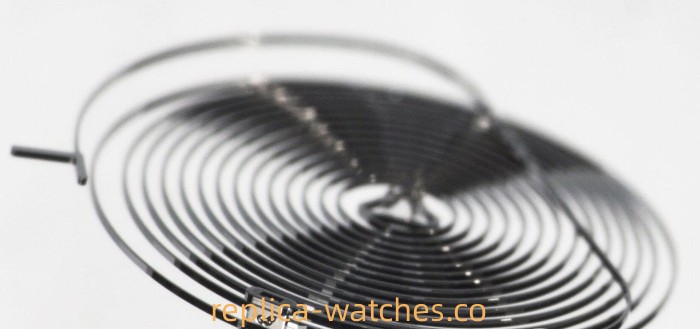
Watch hairspring
From the early iron-based alloy hairspring materials to the later INVAR iron alloy hairsprings mixed with nickel to today’s mainstream Nivarox hairsprings, hairspring materials have continued to evolve with the development of material science for hundreds of years, and the watch industry has also constantly exploring perfect hairspring material. What makes perfect? Since a watch often needs to run continuously for several years or even decades, the number of oscillations of the hairspring reaches a very alarming number (according to the current mainstream vibration frequency of 4HZ, if it runs continuously for one year, the hairspring needs to expand and contract a total of about 252 million times. ), so only a few metal alloys can be used to make hairsprings. In addition, the hairspring must also resist the influence of some external environments in daily life. The early influence mainly came from temperature differences. Later, antimagnetic became more and more critical. Nobel Prize winner Charles Edouard Guillaume invented invar alloy in the early 20th century. This problem is solved while having specific antimagnetic properties.
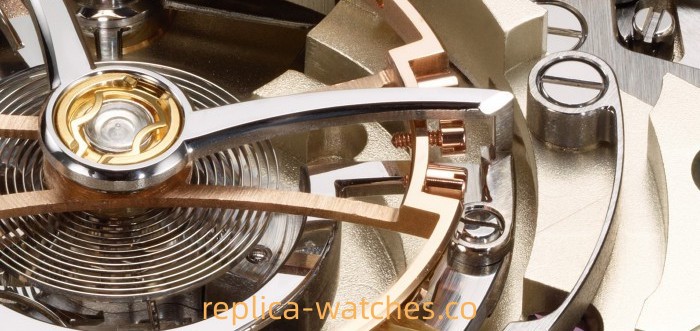
German Moritz Grossmann watch uses Nivarox 1 hairspring.
In 1931, the nickel-chromium steel alloy Nivarox hairspring developed by Dr. Straumann came out. It is composed of seven elements. This weakly magnetic metal alloy has good anti-oxidation and anti-deformation properties, anti-fracture, automatic compensation, no corrosion, and an excellent Thermal deformation coefficient; it has good resistance to temperature differences. Because of this, Nivarox is widely used in the watch industry and has replaced INVAR alloy hairsprings as the mainstream market. Today, in the watchmaking industry, Nivarox has become the first choice for watch factories without self-produced hairsprings and has become a trump card in the hands of the Swatch Group. More than 95% of Swiss watch brands and some non-Swiss brands are using Nivarox FAR. Hairspring. As mentioned before, hairspring is a product with technical barriers. Watch manufacturers who can make their hairsprings generally do not supply external products, so Nivarox has become the overlord in general hairsprings. Although other hairspring manufacturers exist besides Nivarox, such as Altokapa, Japan’s Seiko, Citizen, etc., Nivarox dominates the hairspring industry because of its highly high-cost performance.
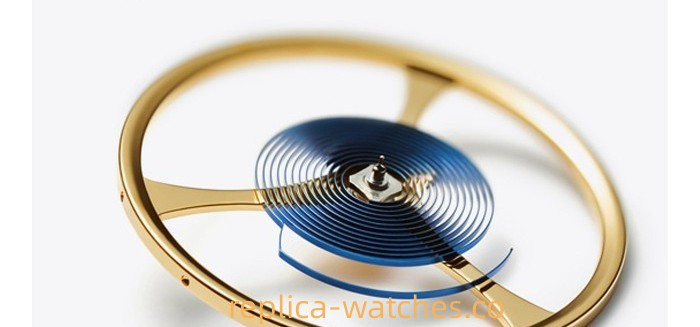
NOMOS homemade blue steel hairspring
Of course, in addition to producing Nivarox hairsprings of different specifications, Nivarox FAR also has other hairsprings, such as the Elinvar nickel-chromium constant elastic steel hairspring used by Richard Mille, Anachron hairsprings that are better than Nivarox, and special hairsprings customized for other companies. Wait.
Silicon hairspring
In recent years, silicon hairsprings have become increasingly popular in fine watchmaking, and the Swatch Group has begun to try to enter the mid- to low-end market. This is a new exploration of hairspring materials in the modern watchmaking industry. From metal alloys to non-metallic materials, it is likely to be a transformation. Regardless of who invented the silicon hairspring, for now, from top brands Patek Philippe, Breguet, Ulysse Nardin, etc., to the familiar Omega and people-friendly hairsprings such as Mido, they have all launched hairsprings based on silicon materials.
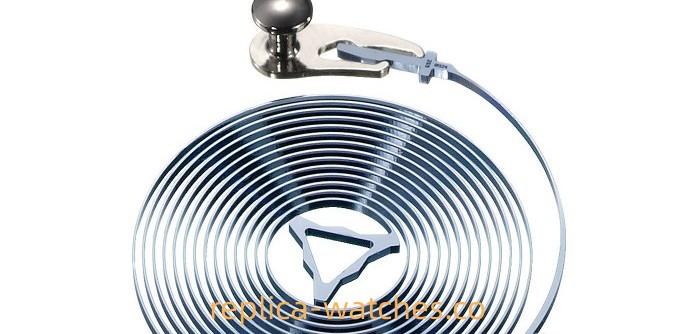
Patek Philippe Spiromax hairspring
Patek Philippe’s cutting-edge research project is based on silicon and plays a trilogy of silicon escapement systems, including the Pulsomax escapement fork, Silinvar escapement wheel, and Spiromax hairspring. In 2014, Rolex released Syloxi, a hairspring based on silicon material used in the 2236 automatic movement. It is worth noting that this is a women’s watch movement. Rolex successfully developed an excellent silicon hairspring, but it has yet to be popularized into the mainstream. For replica watches, it is precisely because silicon material has inherent flaws that Rolex believes it still needs to be the most satisfactory hairspring material. Brands such as Ulysse Nardin, Omega, Breguet, Jaquet Droz, and Blancpain use silicon hairsprings relatively frequently. Silicon hairsprings have a massive advantage over metal hairsprings in that they are entirely unaffected by magnetic fields, but their most significant drawback is that they are too brittle.
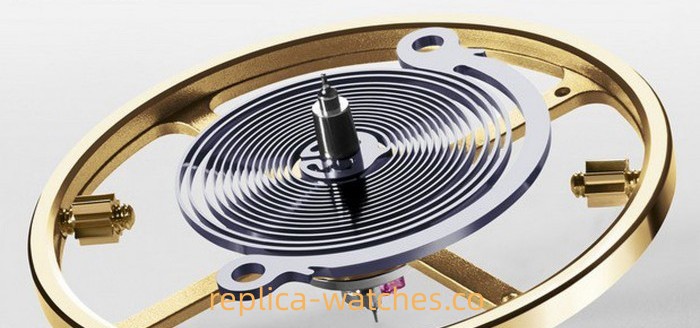
Rolex Syloxi hairspring
There have been frequent discussions about silicon hairsprings in the past few years. The advantage is that it performs better than metal alloy hairsprings. The disadvantage is that it can only be replaced if damaged, which is not conducive to long-term development. If this watch is still around 30 years later, the corresponding parts may no longer match, let alone repair, and it may even be challenging to match a suitable metal hairspring. But from the perspective of the market as a whole, most watches only exist for the moment, and there are still only a few that can last for that long, so overall, the advantages may outweigh the disadvantages.
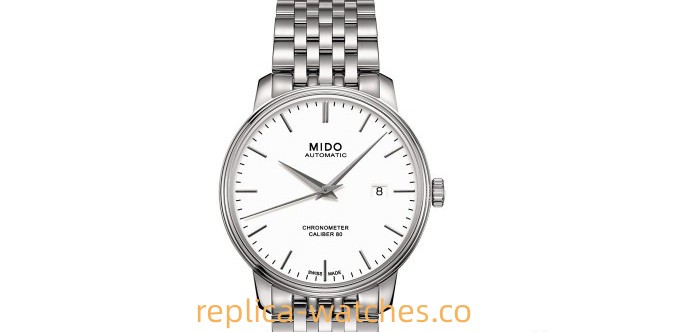
Mido Silicon Hairspring Caliber 80 Belem Seri Watch
Mido has launched the Beren Seri series of watches with a power reserve of 80 hours, which use silicon hairsprings. This should be the first silicon hairspring watch in the affordable price range. This means that silicon hairsprings will no longer be superior and will likely become more prevalent, just as the Swatch Group focused its competitiveness on 80-hour power movements, increasing its advantage in the mid-to low-end market.
Autonomous hairspring
Who do we think of most efficiently when it comes to autonomous hairsprings? It is the first of Rolex’s Parachrom paramagnetic blue niobium hairspring. According to official data, it is one level stronger than ordinary hairsprings regarding earthquake resistance and anti-magneticsantimagnetic. It is also Rolex’s main hairspring. Rolex has accurate timekeeping, excellent practical performance, and can maintain the long life of the fake watch. Parachrom hairspring plays an important role.
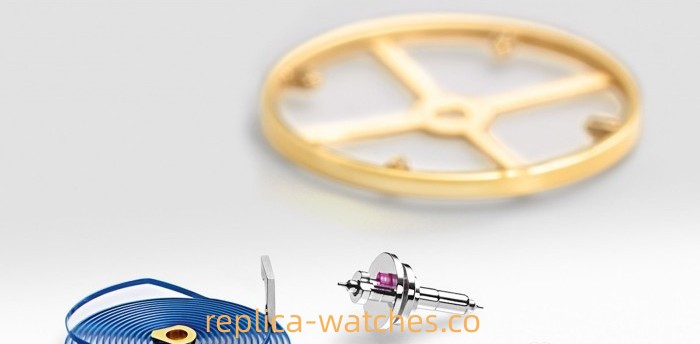
Rolex Parachrom Hairspring
Seiko and the Materials Science Laboratory of Tohoku University in Japan collaborated to develop Spron elastic material used in the mainspring and hairspring of Seiko watches. Spron has a variety of specifications, among which the main ones used for the mainspring are Spron 510, Spron 530 (high-frequency movement), etc., while the ones used for the hairspring are Spron 610, etc. Spron is a nickel-cobalt alloy with five properties: high strength, super elasticity, corrosion resistance, antimagnetic, and temperature resistance. It is widely used in Seiko and some Japanese watches.
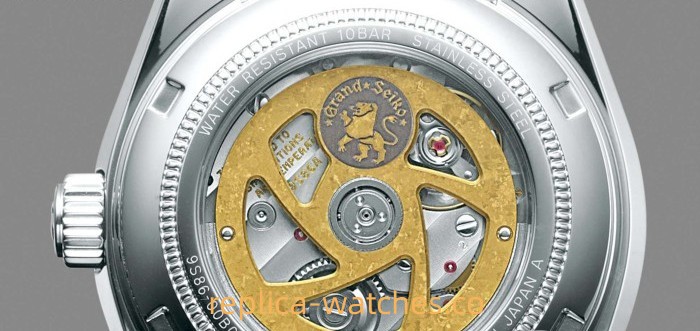
Seiko movement
In addition, some brands are independently developing hairspring materials, and there are also some lesser-known materials, such as Richard Mille’s AK 3 hairspring.
Hairspring structure
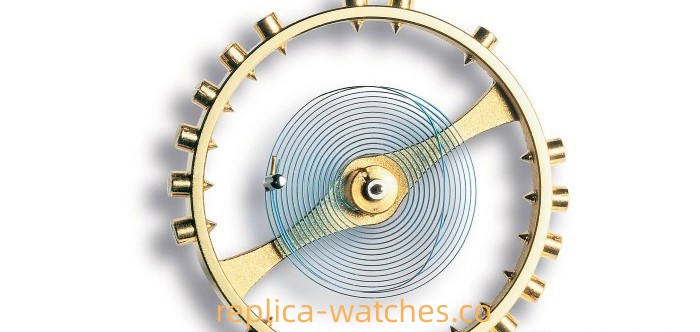
hairspring wound on the end
The difference in hairspring materials determines the performance of the hairspring, but some additional processing is still needed to make the hairspring perform better. Most of the time, the hairsprings we see are flat with an end-winding curve. Generally speaking, this end curve uses the Breguet-type end curve (or Phillips end curve). This kind of curve appears because the end of the hairspring is fixed on the hairspring pile, which affects the concentricity of the hairspring’s expansion and contraction and thus affects the travel time. Therefore, this part of the end is “intercepted” through the curve to reduce this effect.
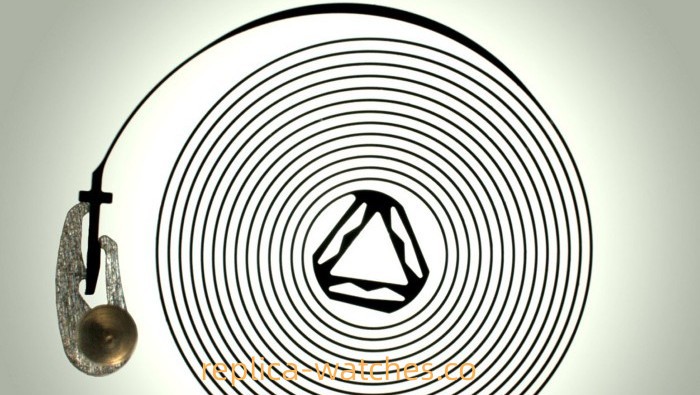
The end of the hairspring is thickened, and the triangular inner frame is thickened.
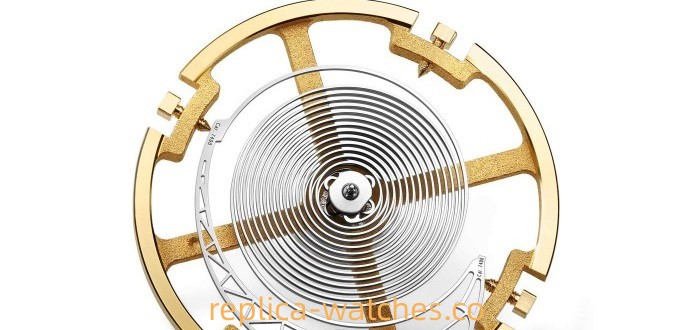
Breguet double-layer hairspring
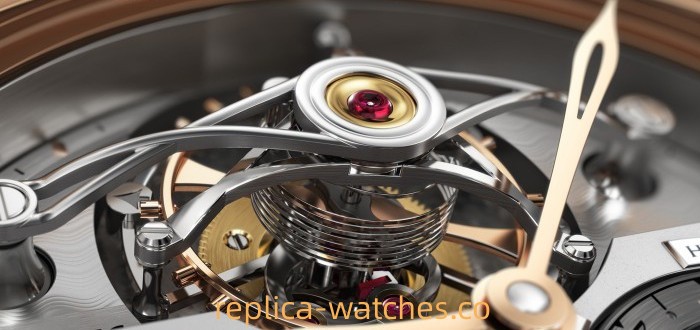
Montblanc cylindrical hairspring
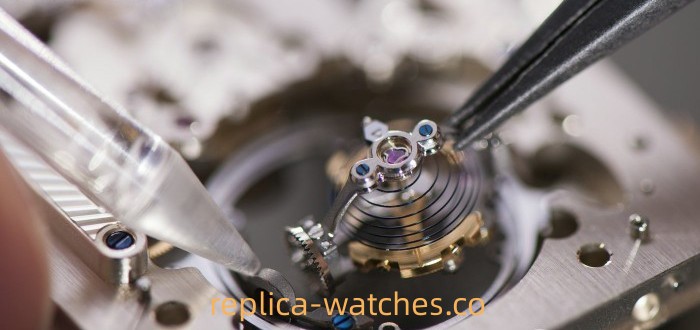
Jaeger-LeCoultre hemispherical hairspring
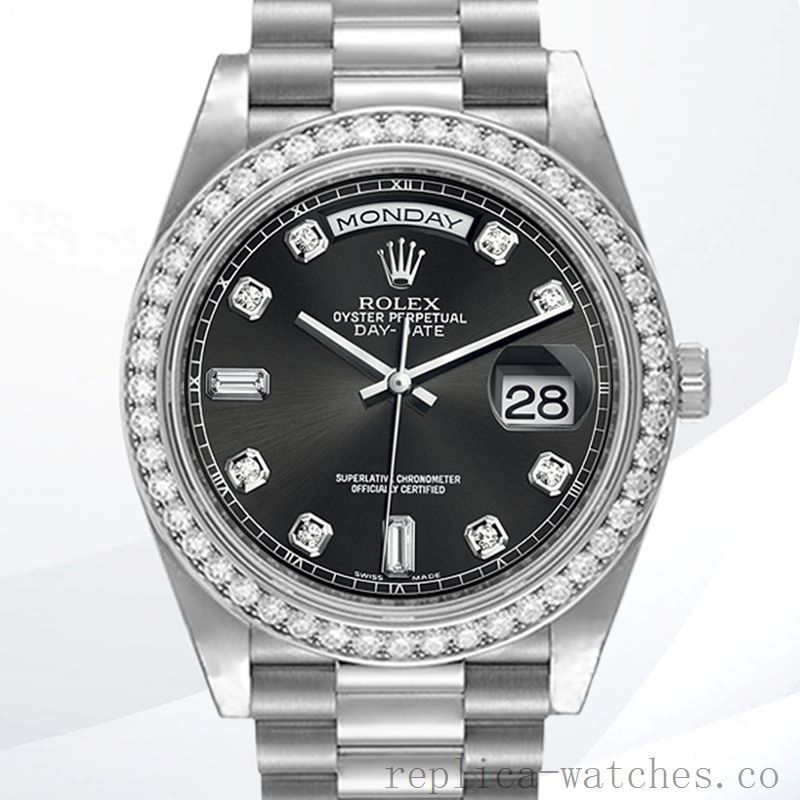
Dial Color: Black Dial
Band Width: 20mm
Movement: Automatic
Series: Day-Date
Gender: Men’s
Model: 118346
Brand: Rolex
